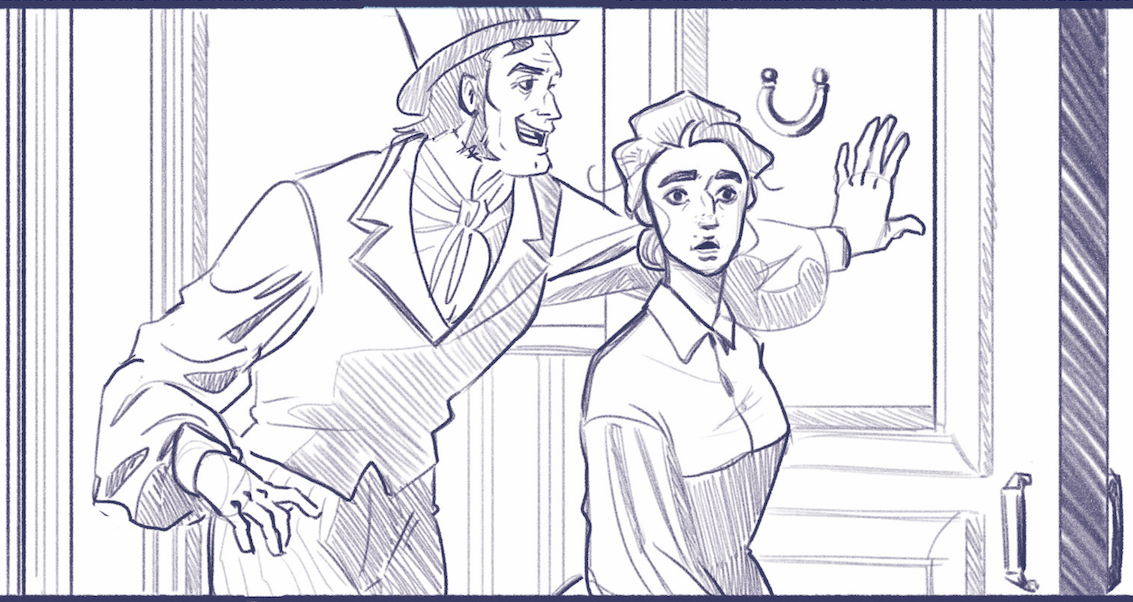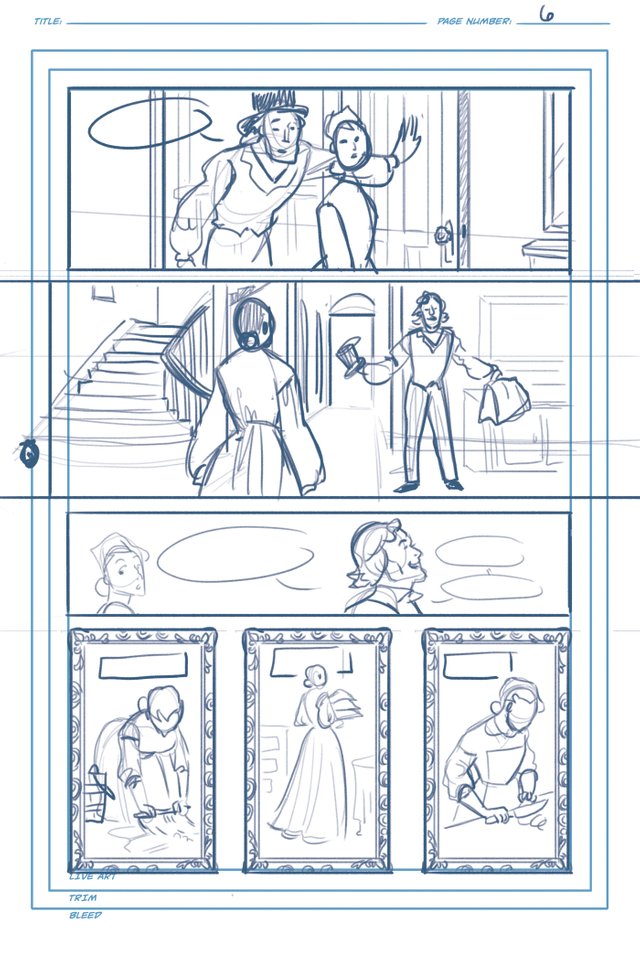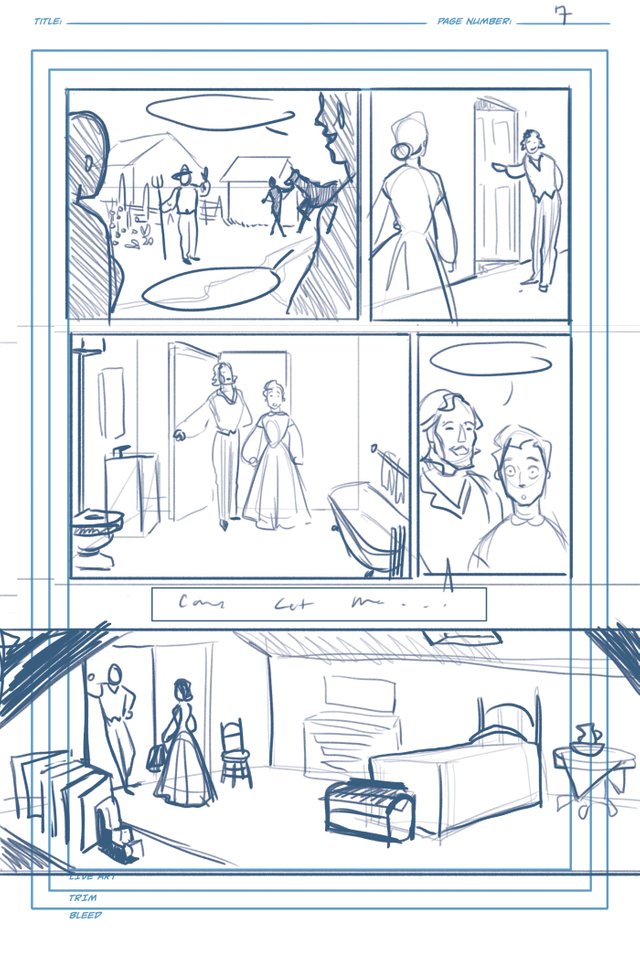Establishing Shots | Comic Update #4

After what seemingly felt like forever ( I think it was only three days), I finally have my computer back from the repair shop. My trackpad had suffered death by coconut water. But now that all is well, I can finally share the next two pages of my victorian comic with you!
Page 6

In comics, and many other media, establishing shots serve the purpose of conveying the environment the subject matter is in. A big rule in comics, as I was taught by my professors, is you need at least one establishing shot per page. So let's say your character is suddenly in a diner in page one and you have your establishing shot: in page two, even if the characters haven't changed surroundings, you still need one shot reestablishing the environment.
These generally are the first panels of a page but you can have them in the middle or at the end if, for example, you want to set a brief moment of mystery.

I didn't have much to say about the process of these pages; the composition changed a tad from the thumbnails but other than that I didn't come across any roadblocks. So, I thought it might be a good time to bring up establishing shots for this post since these two pages set up a new environment and, in the dialogue, set up a lot of the story.
Page 7

This page has three establishing shots since the characters are taken to three different parts of the house. I tend to do a lot of close up shots & wide shot combos in my comics; I find that having a variety of shots makes for more interesting storytelling. While there is a time and a place for repetition if you don't have a specific reason for doing so, having several of the same shots back to back can get boring.

I feel as though I should have a disclaimer at the end of all of my comic posts that any rules that I talk about are not 100% set in stone and can and have been broken. For example, there is a rule that if you have a dialogue-heavy comic you want to avoid having a page just of talking heads. It is almost always repetitive and boring. However, David Aja, who creates really interesting page compositions for the Hawkeye comic, said "eff it" and gave us a page just of talking heads and it worked. So I think it's important to know the rules and the basics but keep in mind that you can break these rules if you can do it in an interesting way.
That's my spiel
I have one more page to share before I go back to the beginning to ink & color. I'm going to fully complete the first 8 pages of the story before I go ahead and pencil the rest of it...which is probably going to be upwards of 64 pages. So that will be a fun time.
Thanks for sticking around and I hope you continue to follow me through this process!
You can check out my previous comic updates here:
If you'd like to keep up with more of my work you can check me out at the following:
Instagram: @la.fumettista
Tumblr: http://la-fumettista.tumblr.com/tagged/art
Twitter: @TheresaChiechi
Website: https://www.theresachiechi.com/
Looking good, you put in so much designs into those frames.
I have two questions if you don't mind the time:
Thank you and I really appreciate your write ups. it is nice to see someone go through this process. Hopefully I can do what you can soon :]
Thank you! And of course: so initially laying out the page doesn't take too long. The thumbnails are done in a matter of minutes but when I do the rough sketch, that could take an hour. The Pencilling and Inking stage are what take me the longest.
As for characters and environments, anything that's super important I plan out first. So I have sketches of all my main characters just to make sure I really know what they look like and can draw them at various angles. I don't sketch out environments but I find reference photos for every setting that the characters will be in.
Thanks for reading, I'm happy you've been enjoying my posts!
you're welcome and I am grateful for you taking the time to share your process, it's helping me sift through my dread and get to work :)
It's so daunting and sometimes I just want to draw butts and call it a day.
How long did it take you of daily practice to get comfortable drawing at this speed?
I am looking forward to seeing more of your world and story
🙏
I find the key to speed is living with mistakes and not letting the pursuit of perfection get too much in the way of things; we all want our art to look immaculate but the reality is, nothing is ever going to be perfect and you can't make art for a living if you can't finish your work in an efficient-time. Same thing for when I was in school. It was better to hand in good work at the deadline than not hand in anything at all because I was trying to get it to be perfect.
But I found the best things to do to improve drawing time is gather all your references before you start drawing and just keep practicing. The more you know anatomy and perspective the less hangups you get along the way.
Very talented, however, your work does look a bit familiar. Can't wait to see more (-=
Thank you for such profound feedback 🙏